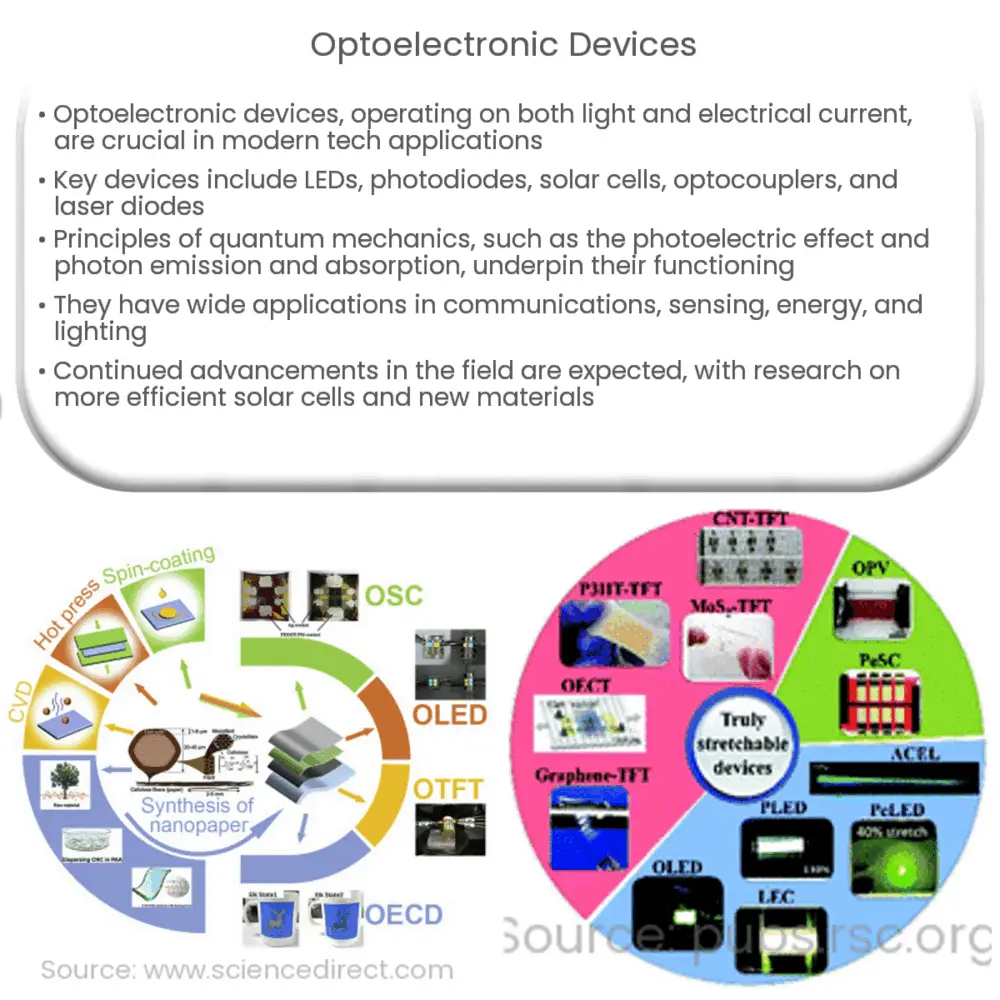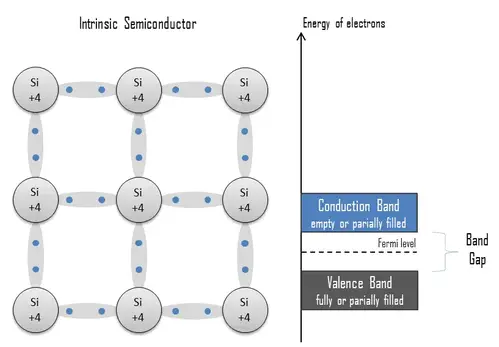Explore the world of optoelectronic devices: their definitions, principles, applications, and future in this comprehensive guide.

Introduction to Optoelectronic Devices
Optoelectronic devices are at the heart of many modern technologies, from communications and sensing to energy conversion and storage. They are devices that operate on both light and electrical current, making them fundamental components in a wide range of applications.
Definition and Classification
An optoelectronic device can be defined as a device that operates under the influence of light and electricity. These devices can either convert electrical signals into optical signals (light) or vice versa. The branch of science and technology that studies these devices is known as Optoelectronics, a subset of photonics.
- Light Emitting Diodes (LEDs): These are the most commonly used optoelectronic devices. They convert electrical energy into light energy.
- Photodiodes: These devices operate in the reverse manner of LEDs, converting light energy into electrical energy.
- Solar Cells: A special type of photodiode, solar cells are used to convert solar energy into electrical energy.
- Optocouplers: Also known as optoisolators, these devices use light to transfer electrical signals between isolated circuits.
- Laser Diodes: Similar to LEDs but emit light in a highly directional and coherent manner.
Working Principles
Optoelectronic devices generally operate based on the principles of quantum mechanics. Specifically, the photoelectric effect and the emission and absorption of photons are fundamental processes at play. Here is a brief explanation of these principles:
- Photoelectric Effect: When light falls on the surface of a material, it can emit electrons. This is known as the photoelectric effect and is crucial to the operation of devices like photodiodes and solar cells.
- Emission and Absorption of Photons: When an electron in an atom jumps from a higher energy level to a lower one, it emits a photon. Conversely, an electron can absorb a photon and jump to a higher energy level. These processes are crucial to the operation of LEDs and laser diodes.
These principles allow optoelectronic devices to harness the dual nature of light — as both particle (photon) and wave — providing a versatile platform for technological applications. With these fundamentals in mind, we can now delve into the application of these devices in our daily lives.
Applications of Optoelectronic Devices
Given their ability to manipulate light and electricity, optoelectronic devices have a broad array of applications:
- Communications: Optoelectronic devices, particularly laser diodes and photodiodes, are key components in fiber-optic communication systems. They allow for the conversion of electrical signals to light signals and vice versa, enabling high-speed data transmission over long distances.
- Sensing and Measurement: Many sensors, such as those used in digital cameras, rely on optoelectronics. Other uses include industrial measurement systems, safety detectors, and medical devices.
- Energy: Solar cells are optoelectronic devices that convert sunlight directly into electricity. This technology is central to the renewable energy sector.
- Lighting: LEDs are commonly used in lighting applications, from household lamps to screens on electronic devices and large-scale digital billboards.
The Future of Optoelectronics
The field of optoelectronics continues to advance at a rapid pace, spurred by ongoing research and development efforts. Some future trends include the development of more efficient solar cells, advancements in quantum computing using photonic components, and the exploration of new materials, such as perovskites and 2D materials, for optoelectronic applications.
Conclusion
In conclusion, optoelectronic devices play a pivotal role in our modern world, bridging the gap between electrical and optical systems. Their diverse range of applications — from communication and sensing to energy conversion and storage — is testament to their versatility and the unique advantages they offer. With continuous advancements in this field, we can expect to see even more innovative uses of optoelectronics that will further shape our technological landscape.



